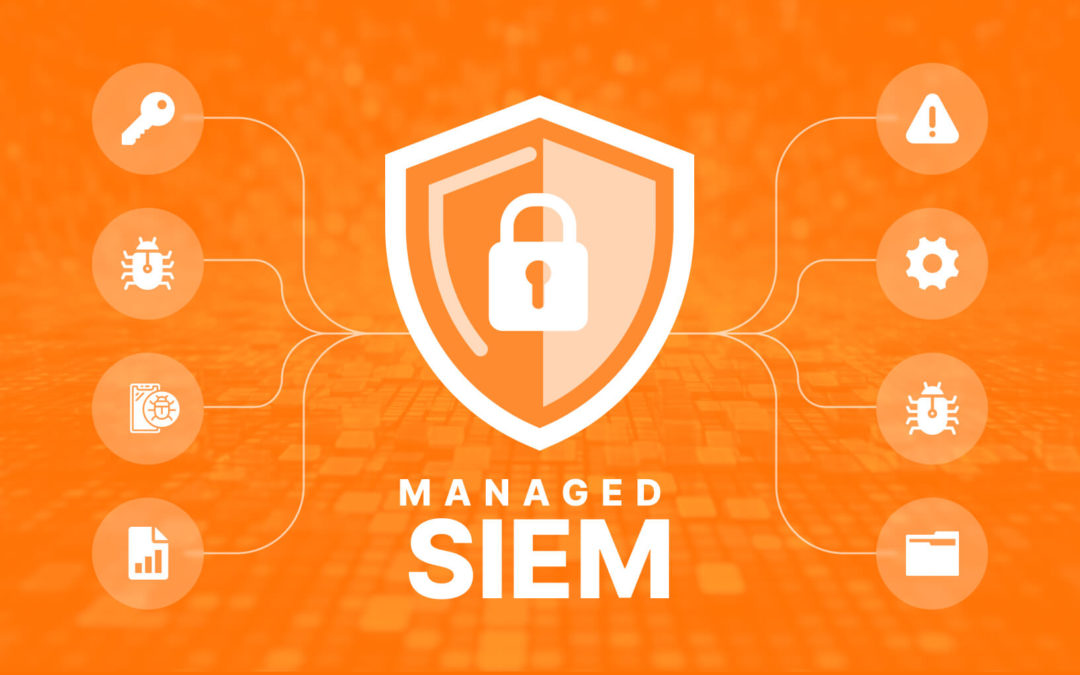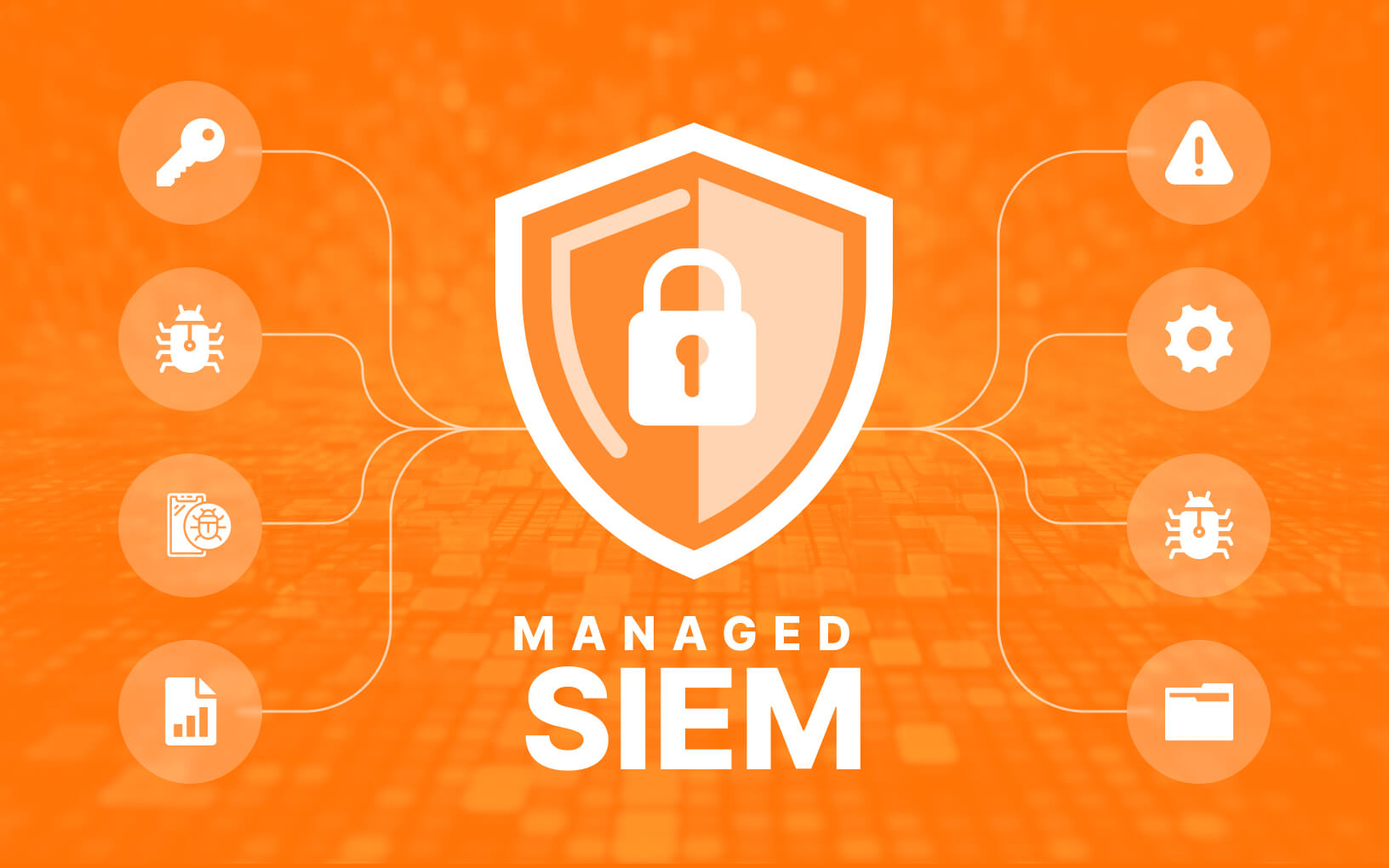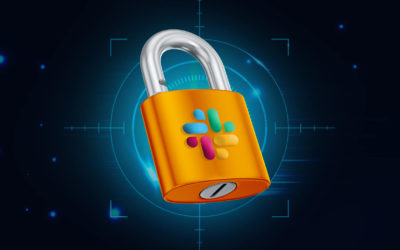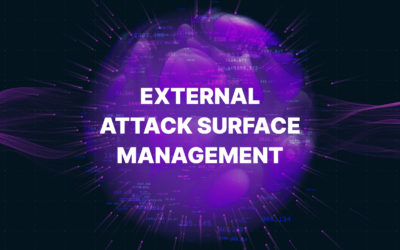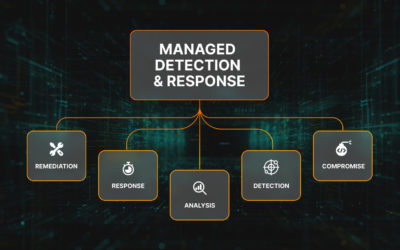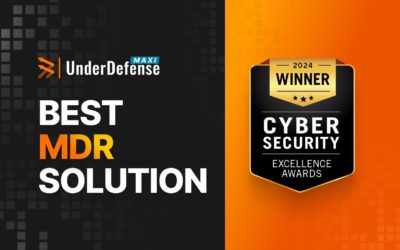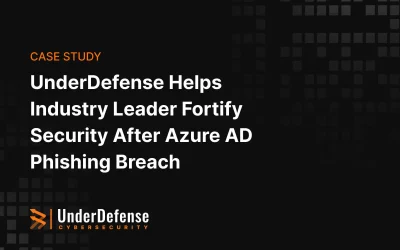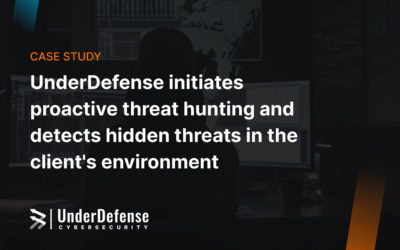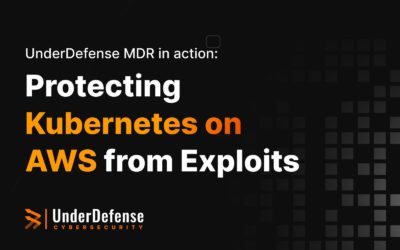Written

Managed SIEM Pricing Guide
As cyber threats become increasingly sophisticated, businesses must implement robust security measures to protect their sensitive data and maintain regulatory compliance. Managed Security Information and Event Management (SIEM) solutions have emerged as a vital component in the cybersecurity arsenal, offering advanced threat detection, real-time monitoring, and comprehensive incident response capabilities.
But how much does it cost? It depends on a range of factors. In this blog post, we will explore the common pricing models for managed SIEM and provide a detailed breakdown to help you understand what to expect and how to budget effectively for this crucial service.
Managed SIEM common pricing models
When evaluating Managed SIEM pricing, it’s crucial to consider factors such as service level requirements, customization needs, deployment preferences, and the service provider’s reputation. Here’s a pricing breakdown for Managed SIEM services based on different models:
Subscription-based:
In this model, clients pay a recurring subscription fee to access the Managed SIEM service. Pricing tiers can vary based on the level of service and the number of features included. Clients receive invoices either monthly or quarterly, depending on their preference.
Prepayment 100% upfront:
This approach often covers a specified contract duration, such as one year or more. By paying in advance, clients may benefit from discounts or other incentives the service provider offers. This model ensures that the service is fully funded from the outset, providing financial stability and predictability for both the client and the provider.
Per-user or per-device:
Some providers offer pricing based on the number of users or devices being monitored. This can be advantageous for organizations with a predictable user/device count and help tailor costs to actual usage.
The volume of data processed:
Pricing may be structured around the volume of data the SIEM platform processes. This could include logs from servers, applications, network devices, etc. Tiered pricing based on data volume ensures scalability and fair pricing based on usage.
Client-owned SIEM:
In this model, the client purchases and owns the SIEM software outright. Costs typically include upfront licensing fees, implementation, integration, and ongoing maintenance costs. The client is responsible for managing the infrastructure and security operations internally.
MSSP-owned SIEM:
With this model, the Managed Security Service Provider (MSSP) owns and operates the SIEM solution on behalf of the client. Pricing is usually subscription-based, with clients paying a recurring fee for access to the service. Costs may include subscription fees, customization, integration, and additional services such as incident response and support.
Custom pricing:
Custom pricing may be negotiated for organizations with unique requirements or larger-scale deployments. This could include specialized integrations, additional features, or extended support options.
What is the average cost of managed SIEM services?
Typically, the cost of a managed SIEM falls within the range of $5,000 to $10,000 per month. However, this estimate serves as a general guideline, and the actual pricing can fluctuate based on specific vendor and your individual needs as well as other factors:
- Business size: The scale and complexity of the organization influence the pricing structure. Larger enterprises with extensive networks may incur higher costs compared to small or medium-sized businesses.
- Data volume: The amount of data processed and monitored by the SIEM solution affects pricing. Higher data volumes often result in increased costs due to additional processing and storage requirements.
- Customization level: Organizations requiring extensive customization, tailored dashboards, correlation rules, or integrations with existing systems may face additional charges.
- Feature requirements: The breadth of features and functionalities desired by the organization impacts pricing. Advanced threat detection capabilities, compliance management tools, and real-time alerting systems may incur higher costs.
The best way to get a precise quote is to contact potential Managed SIEM vendors directly. Clearly define your requirements (organization size, data volume, features needed, etc.) to receive the most relevant pricing information.
Stop security headaches, not your budget.
With the UnderDefense Managed SIEM service, you can extend, simplify, and centralize your security visibility, consolidating disparate security data into a unified platform.
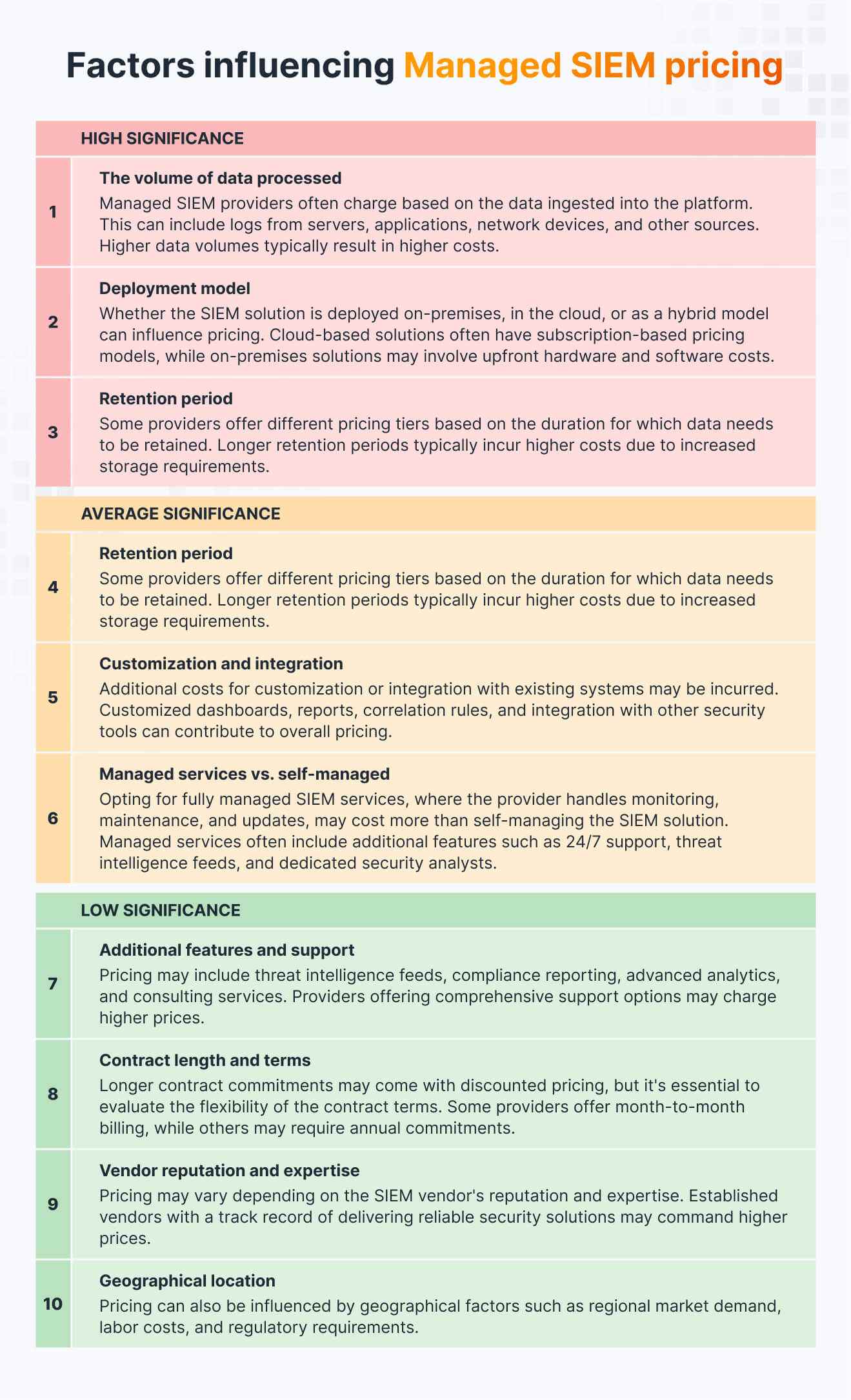
How to choose the right Managed SIEM provider
Choosing the right Managed SIEM provider is critical for any organization looking to enhance its cybersecurity posture. Here’s how you can do it:
- Define your requirements: Clearly define your organization’s security objectives, compliance requirements, and budget constraints. Determine the specific features, functionalities, and level of service you need from a managed SIEM provider.
- Conduct market research: Research and identify reputable managed SIEM providers. Consider industry reputation, customer reviews, analyst reports, and case studies to evaluate each provider’s track record and expertise.
- Assess capabilities and technology: Evaluate the capabilities and technology offered by each managed SIEM provider. Consider data ingestion and processing capabilities, real-time threat detection, incident response capabilities, scalability, and integration with existing security tools and systems.
- Evaluate security expertise: Assess the expertise and qualifications of the provider’s security team. Look for providers with certified security professionals, experienced threat hunters, and incident responders who can effectively monitor, analyze, and respond to security incidents.
- Review compliance support: Ensure that the managed SIEM provider has experience and expertise in supporting regulatory compliance requirements relevant to your industry, such as GDPR, HIPAA, PCI DSS, etc. Verify that the provider’s services align with your organization’s compliance obligations.
- Consider deployment options: Evaluate the deployment options offered by each managed SIEM provider, such as on-premises, cloud-based, or hybrid deployments. Choose a deployment model that aligns with your organization’s infrastructure, security policies, and budgetary constraints.
- Compare pricing and contract terms: Request pricing quotes from multiple managed SIEM providers and compare them based on subscription fees, data volume pricing, customization costs, and contract terms. Pay attention to hidden costs and ensure the pricing structure is transparent and scalable.
- Assess support and Service Level Agreements (SLAs): Evaluate each provider’s level of support, including response times, incident escalation procedures, and the availability of dedicated security analysts. Review the provider’s SLAs to ensure they meet your organization’s uptime and performance requirements.
- Request references and demos: Ask each managed SIEM provider for customer references and case studies to validate their track record and customer satisfaction levels. Request product demos or trials to assess the provider’s SIEM platform’s usability, functionality, and effectiveness.
- Consider long-term partnerships: Choose a managed SIEM provider willing to establish a long-term partnership and collaborate closely with your organization to address evolving security threats and business needs. Ensure that the provider is responsive to feedback and committed to continuous improvement.
Interested in Managed SIEM Service for Your Organization?
Contact UnderDefense Today
Recent Posts
Ready to protect your company with Underdefense MDR?
Related Articles
UnderDefense Helps Industry Leader Fortify Security After Azure AD Phishing Breach
CASE STUDYUnderDefense Helps Industry Leader Fortify Security After Azure AD Phishing Breach...
UnderDefense Initiates Proactive Threat Hunting and Detects Hidden Threats in the Client’s Environment
CASE STUDYUnderDefense Initiates Proactive Threat Hunting and Detects Hidden Threats in the...
Protecting Kubernetes on AWS from Exploits
Slack Security Best Practices
Incident Response Plan Template – Free PDF
A cyberattack is a WHEN, not an IF. Don’t waste time scrambling…






